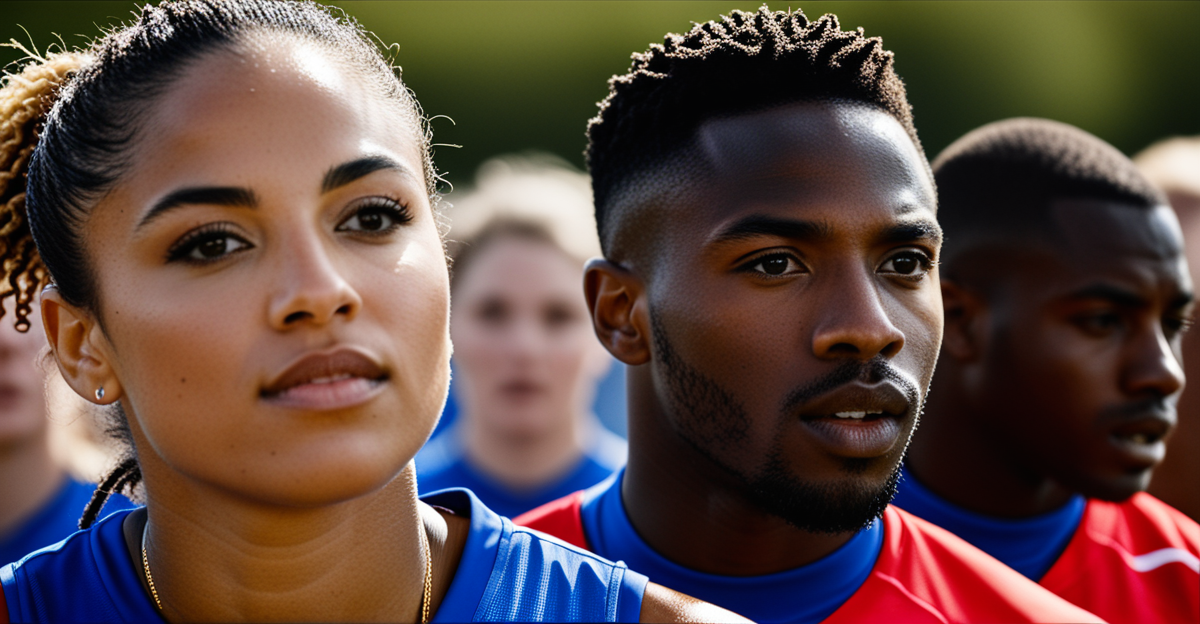Current landscape of diversity and representation in UK sports
In the UK sports landscape, diversity and representation have seen gradual improvement but significant gaps remain. Data reveals that ethnic minorities and women are underrepresented, especially in leadership roles. For example, while athletes from diverse backgrounds are increasingly visible, representation statistics indicate a slower rise in senior management and governance positions.
The diversity in UK sport extends beyond ethnicity and gender, including disability and social background. Despite progress, a notable disparity persists in access and support opportunities for underrepresented groups. Representation statistics frequently highlight that athletes from minority ethnic backgrounds make up a smaller percentage in certain sports, although sports like football and athletics demonstrate better inclusivity at the athlete level.
Also to discover : How Has Technology Impacted the Evolution of Sports in the UK?
A key trend in the UK sports landscape includes the growing emphasis on diversity in UK sport policies aimed at closing these gaps. Several sports organizations have increased efforts to track demographic changes, showing modest but positive movement in representation statistics over recent years. However, these figures vary widely between disciplines and levels, reflecting the need for targeted strategies to address inequalities both on and off the field.
Strategic initiatives by UK governing bodies
UK sports governing bodies have implemented targeted diversity initiatives and inclusion policies to address longstanding representation gaps. The Football Association (FA) and UK Sport are prominent examples, developing comprehensive frameworks aimed at boosting diversity and inclusion across all levels. These policies often combine mandatory regulations with voluntary commitments to foster an inclusive culture.
Have you seen this : What Are the Key Challenges Facing Future UK Sports Development?
For example, several diversity initiatives focus on increasing participation and leadership representation among underrepresented groups, including ethnic minorities, women, and disabled individuals. These programs include leadership development schemes, mentoring, and community outreach, explicitly designed to tackle barriers highlighted in the UK sports landscape.
Inclusion policies require organizations to monitor and report on their demographic data regularly, strengthening accountability. This approach helps track progress systematically, ensuring diversity efforts translate into tangible improvements. UK sports governing bodies also collaborate with external partners to widen reach and effectiveness.
By institutionalizing these frameworks, UK sports governing bodies demonstrate a strong commitment to embedding diversity in UK sport’s culture and structures. This strategic direction is critical to reducing disparities that persist in athlete and leadership representation, as reflected in the evolving representation statistics.
Current landscape of diversity and representation in UK sports
The current landscape of diversity in UK sport reveals a complex picture of gradual progress alongside persistent disparities. While overall participation among ethnic minorities and women has improved, representation statistics show these groups remain underrepresented, especially in leadership and governance roles. For example, ethnic minorities constitute a smaller proportion of senior officials compared to their presence in athlete cohorts, highlighting an ongoing gap in decision-making positions within the UK sports landscape.
Data indicates sports like football and athletics lead in diversity at the player level, yet other disciplines show limited inclusivity. The divide extends beyond ethnicity and gender, encompassing disability and socio-economic background, where access to resources and support vary significantly. These disparities spotlight systemic challenges within the recruitment and retention pipelines.
Notable trends include increased visibility of underrepresented athletes combined with slower advancement to leadership roles. The overall slow pace reflects structural barriers and a need for enhanced development pathways. Consequently, tackling these issues requires a multi-faceted approach, addressing both grassroots participation and executive representation to foster truly inclusive growth within the diverse UK sport environment.
Current landscape of diversity and representation in UK sports
The UK sports landscape continues to reveal uneven progress in diversity in UK sport, with representation statistics underscoring persistent gaps. Data shows that while athlete diversity improves in visible roles, such as football and athletics, underrepresentation remains stark in leadership and governance. For instance, ethnic minorities compose a significant portion of players in certain sports but hold disproportionately fewer senior positions. Similarly, women’s representation at executive levels trails behind their participation rates on the field.
Representation statistics also highlight disparities related to disability and socio-economic background, which are less frequently addressed in mainstream diversity narratives. This multifaceted inequality restricts equal access to opportunities and hinders inclusive talent development.
Notably, the landscape displays two clear trends: a gradual rise in participation among underrepresented groups and a slower, more resistant shift in leadership demographics. The latter reflects systemic barriers, such as limited mentorship and recruitment bias. Addressing these challenges in the UK sports landscape requires strategic realignment of development pathways, focusing not just on athlete inclusion but also on diversifying decision-making structures. Tracking these nuances in representation statistics remains vital to catalyzing comprehensive diversity progress within UK sport.
Current landscape of diversity and representation in UK sports
The UK sports landscape presents a multifaceted view of diversity in UK sport, marked by both encouraging progress and persistent disparities. Representation statistics illustrate that while ethnic minorities and women have increased participation rates as athletes, significant underrepresentation remains in leadership and governance roles. For instance, ethnic minorities account for a considerable proportion of players in football and athletics but hold far fewer senior management positions.
Data further reveals that inequalities extend beyond ethnicity and gender, encompassing disability and socio-economic factors that influence access and advancement opportunities. These issues are compounded by systemic challenges such as recruitment biases and limited mentoring for underrepresented groups.
Key trends in the diversity in UK sport include a gradual rise in athlete diversity coupled with a much slower shift in leadership demographics. This gap signals ongoing structural barriers that hinder the translation of on-field inclusivity into decision-making representation. Addressing these trends requires comprehensive strategies that not only boost grassroots participation but also create clear pathways to leadership for diverse talent.
Continuous monitoring of representation statistics remains critical to understanding progress and tailoring initiatives that reflect the complex realities within the UK sports landscape.






